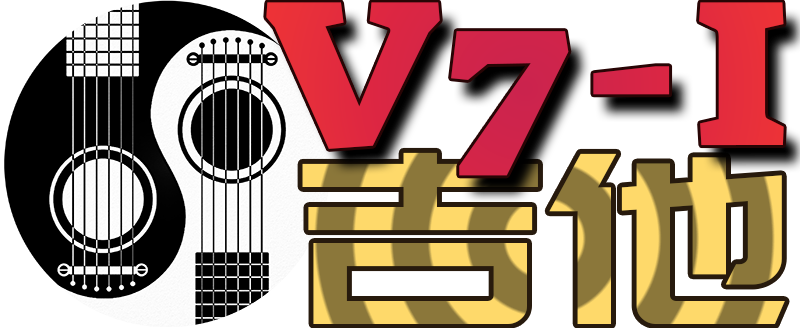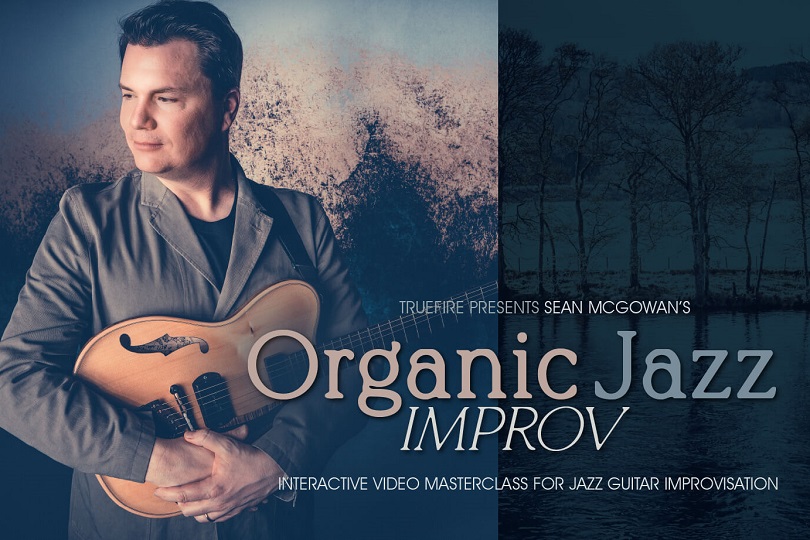时长3小时31分钟。更多预览
A common complaint among both beginning and intermediate jazz guitarists is that their solos have the tendency to sound more like scale and arpeggio exercises, and less like the compelling musical ideas in the tradition of the great jazz masters.
Sean McGowan's Organic Jazz Improv presents a range of creative, organic, and effective ways to overcome this very common challenge by focusing less on scales and arpeggios and shifting your attention to chord tones, chromatic embellishment, rhythmic phrasing, and motivic development.
"Organic Jazz Improv is devoted to learning and understanding the fretboard in an organic way, and also to enhance your improvised solos with rhythmic, chromatic, and substitution strategies. To play over complex chord progressions found commonly in jazz styles, we need to be able to access any note and chord - anywhere on the neck. We don't ever want the continuity of our solo line or ideas to be interrupted because we get lost on the fretboard, or aren't sure which notes will work over any given chord.
Quite often, students of jazz spend a lot of time thinking about which scales or modes will work over chords typically found in a standard progression. While this is a worthwhile study - and certainly a valid approach to soloing when done in a musical way - players will spend an enormous amount of time learning and practicing scales, only to complain that their improvised solos sound like they're "running scales"up and down the neck.
Another common complaint is that guitarists don't really know what notes they're playing - they're just kind of stuck in a particular fingering pattern, ascending and descending, without making a lot of musical sense. In this course, we're going to take a deep dive into some concepts that will open up the entire fretboard, and fully address playing over chord changes without ever defaulting to scales or modes.
All approaches to improvisation are valid and worthy; it's all about diversifying and expanding your solo palette. My hope with this course is to guide your discovery of a whole bunch of new ideas with regard to rhythmic phrasing, vertical and chromatic approaches to soloing, and new substitution ideas to color your playing."
In the first section, Sean unravels the inherent complexities of the fretboard. He'll do this by organizing the fretboard into 5 distinct neighborhoods, each one consisting of familiar chord shapes and fingering patterns.
"The first section explores a concept I call "The Five Neighborhoods", which serves to open up the fretboard in order to learn the notes of each chord and how they affect the overall sound. We'll learn to "think vertically"and assertively establish the movement of the chord progression through single-note lines, adding chromatic embellishment along the way through the use of upper and lower neighbor tones."
The second section examines a number of ways to create organic solo lines that incorporate rhythmic devices, define the chord progression, and add color using chromaticism.
"The second section will discuss ways to create exciting and musical solos by exploring elements of rhythmic phrasing, interpretation, and motivic development. We'll also build solo lines combining these rhythmic devices with the chord and neighbor tone concepts by working through a number of musical examples over backing tracks."
Section three introduces the concept of chord substitution, which creates a variety of colors and textures simply by utilizing the basic chord shapes in new ways.
"Section 3 explores another improv device that incorporates chord substitution. Applying this concept will yield a treasure trove of colorful ideas to add to your solo lines, yet it is easy because it elaborates on the same concepts from the five neighborhoods in the first section. The result will be more musical and organic-sounding lines that are intentional and focused directly on outlining the progression."
And finally, in the fourth section, you'll put it all together by applying all of the previous section's approaches across five soloing performance studios in a variety of keys and feels.
"We'll play through five études based on classic jazz progressions that feature tonally shifting ii-V-I movements. Each étude is performed at tempo, and then thoroughly analyzed in the breakdown."
Sean will explain and demonstrate all of the key concepts and approaches along the way. You'll get standard notation and tabs for all of the performance studies. Plus, you'll be able to use TrueFire's learning tools to sync the tab and notation to the video lesson. You can also loop or slow down the videos so that you can work with the lessons at your own pace. All of the backing tracks are included to work with on your own as well.
1.如果遇到其他问题可到问答社区进行提问!“进入问答社区”
2.本站非常重视知识产权,如有侵犯任何第三方权益,请及时联系我们,将及时予与删除!“版权协议点此了解”!


 x
x